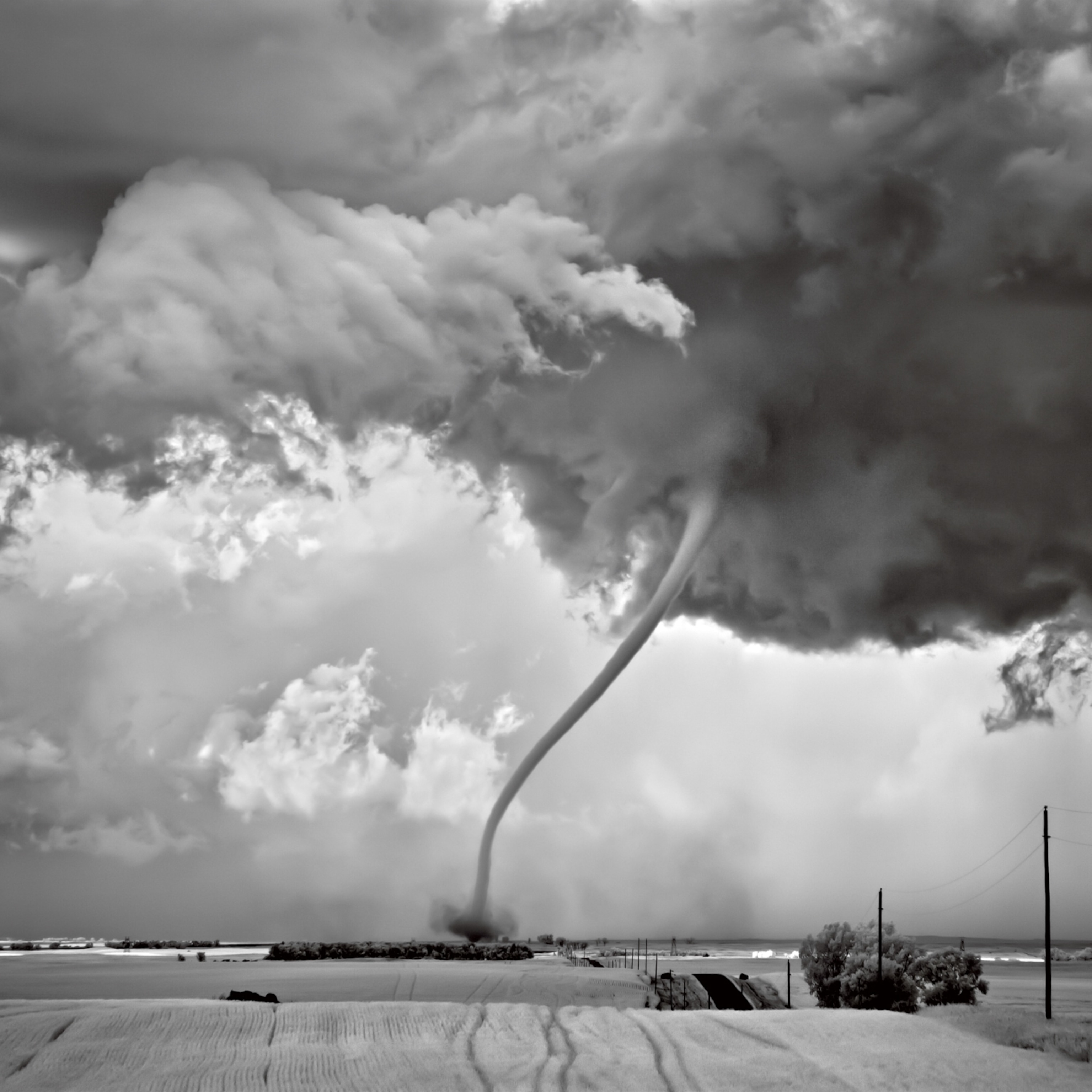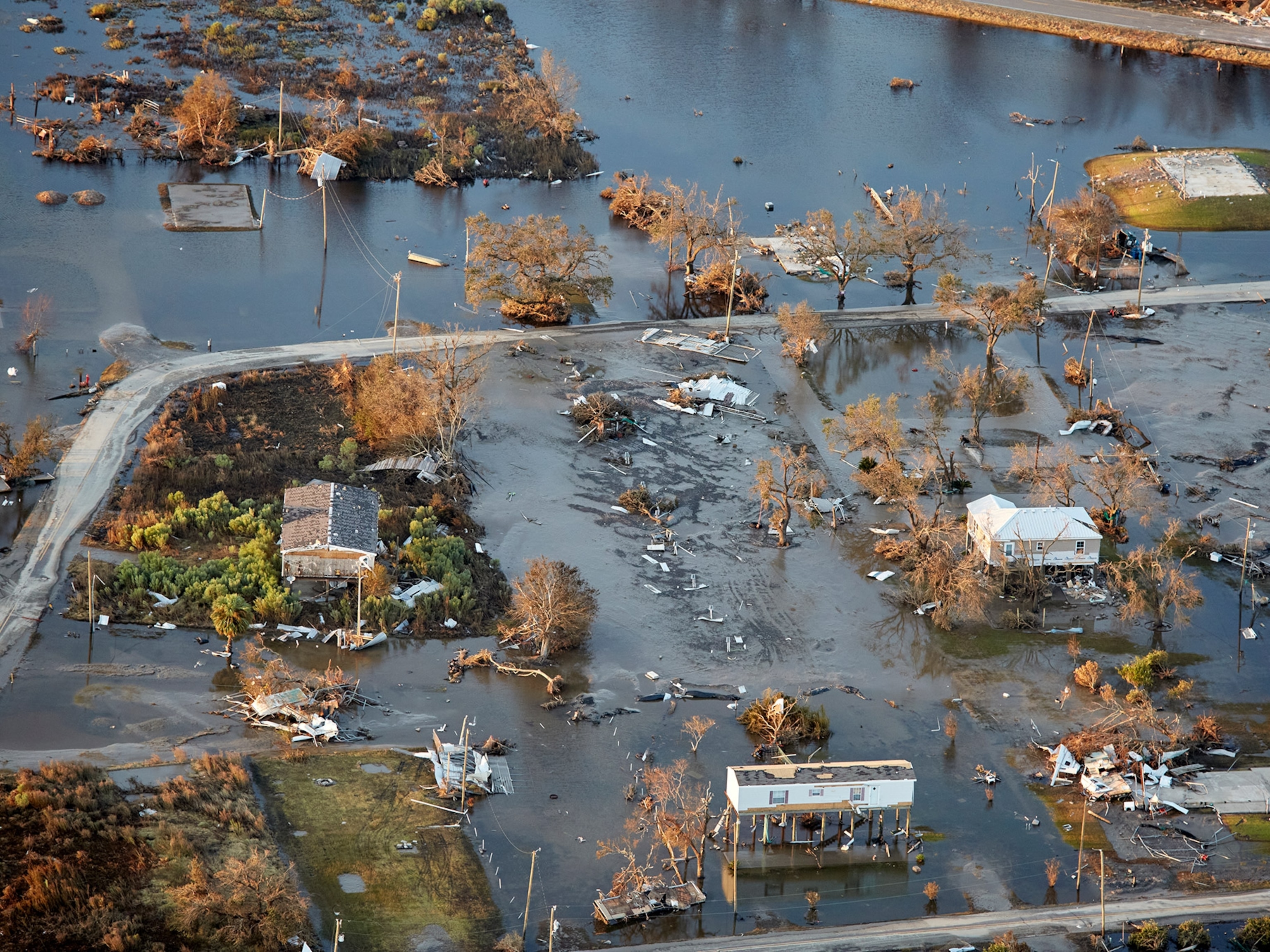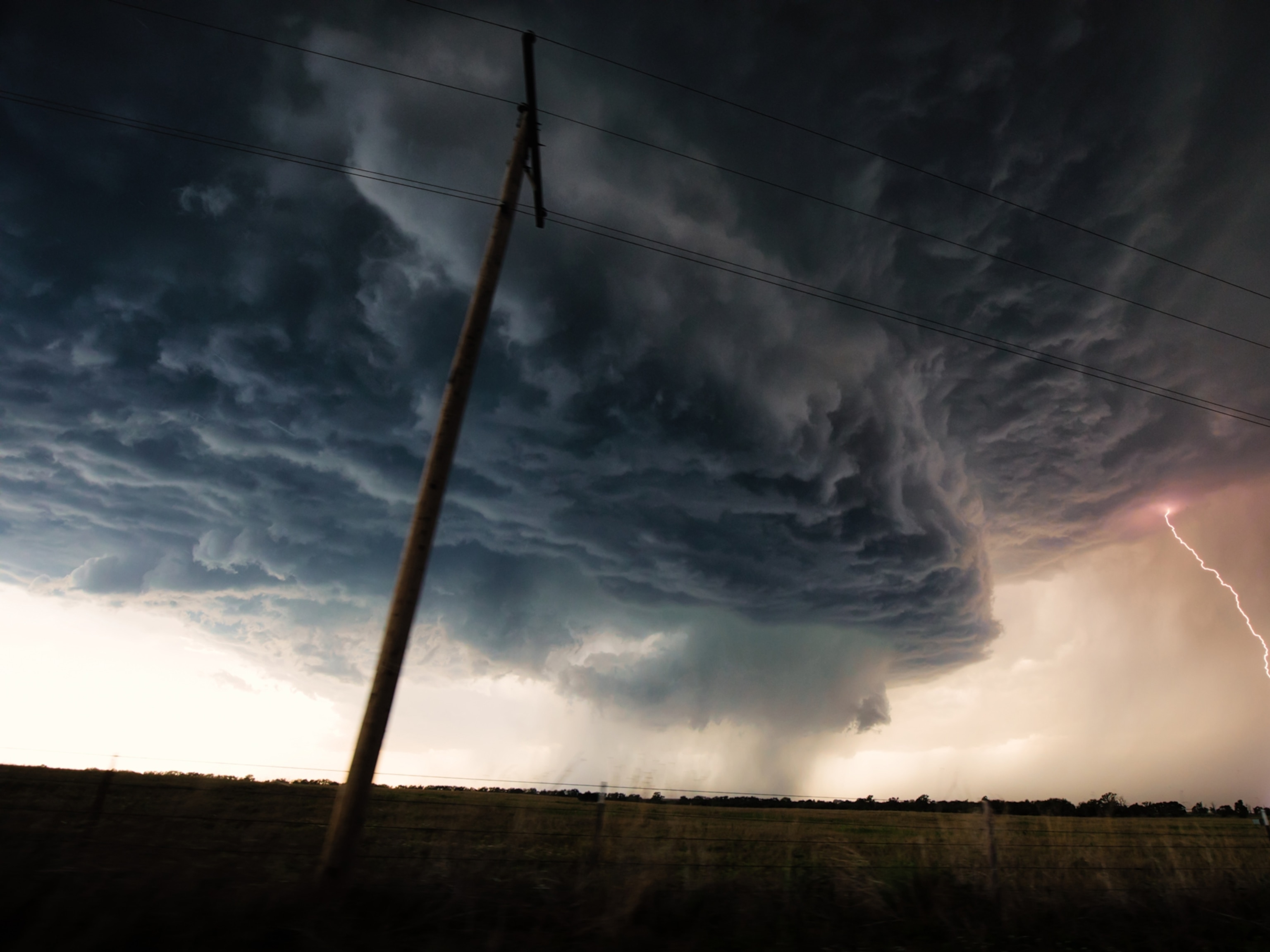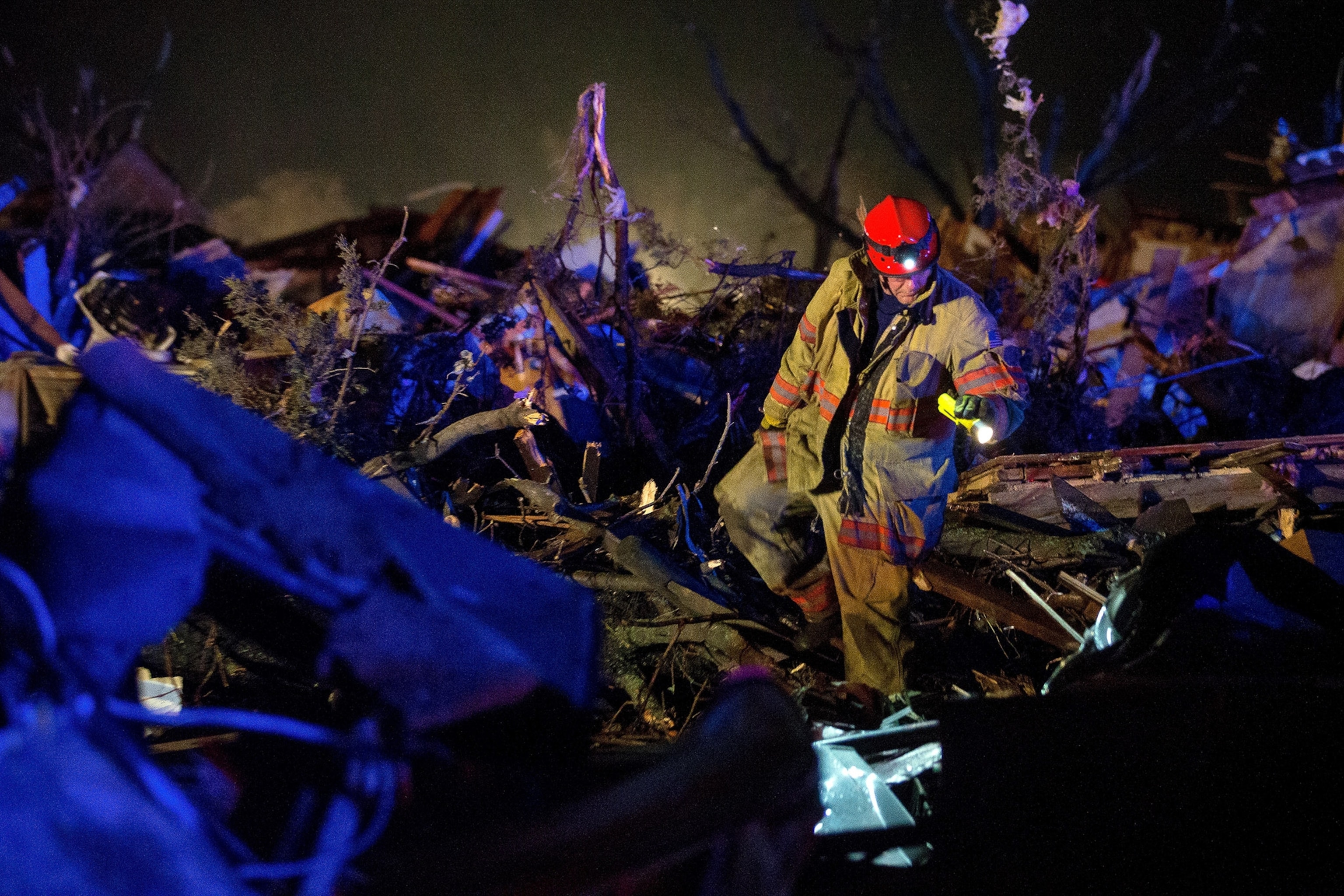
The Science Behind Midwest’s Killer Tornadoes
Weather scientists work to improve forecasting to help people get out of the way of nature’s fury.
Spring is the season for dangerous tornadoes across much of the United States, and this year is shaping up to be no exception, with huge twisters ripping through Illinois Thursday, causing one death and at least seven injuries.
The damage has been so extensive that snow plows have been used to clear Illinois streets of debris. Six counties in the state were affected, and other tornadoes were reported in Kansas, Missouri, and Oklahoma.
More severe weather is in the forecast, with parts of southwest Ohio, Indiana, and northern Kentucky under a tornado watch from the federal Storm Prediction Center.
How tornadoes form is not fully understood, but scientists are working to get a better handle on twisters, largely with the aim of improving warning systems.
Here's what we do know: A tornado, or twister, is a violently rotating column of air that extends between the Earth's surface and a cloud, usually a cumulonimbus cloud. Most tornadoes last for less than ten minutes, says Harold Brooks, a research meteorologist with the National Oceanic and Atmospheric Administration's (NOAA) National Severe Storms Laboratory (NSSL) in Norman, Oklahoma.
These tornadoes have wind speeds of less than 110 miles (177 kilometers) per hour, are about 250 feet (76 meters) across, and travel only a few miles before they dissipate.
Large tornadoes usually last longer—around 30 minutes. The most powerful twisters have wind speeds of more than 300 miles (483 kilometers) per hour, which can rip buildings off their foundations. They can be more than two miles (3.2 kilometers) wide, and can spin across the ground for dozens of miles.
Tornadoes kill an average of 60 people a year in the U.S., mostly from flying or falling debris, reports NOAA. (See "Interactive: Forces of Nature.") Half of those deaths are caused by the strongest one percent of the most violent storms, says Brooks.
How Tornadoes Form
The most intense tornadoes emerge from what are called supercell thunderstorms. For such a storm to form, Brooks says, you first "need the ingredients for a regular thunderstorm."
Those ingredients include warm moisture near the surface and relatively cold, dry air above. "The warm air will be buoyant, and like a hot-air balloon it will rise," says Brooks.
A supercell requires more: winds that increase in strength and change direction with height. "Then the updraft tends to rotate, and that makes a supercell," says Brooks.
The supercell churns high in the air and, in about 30 percent of cases, leads to the formation of a tornado below it. This happens when air descending from the supercell causes rotation near the ground. (See an animation of how tornadoes form.)
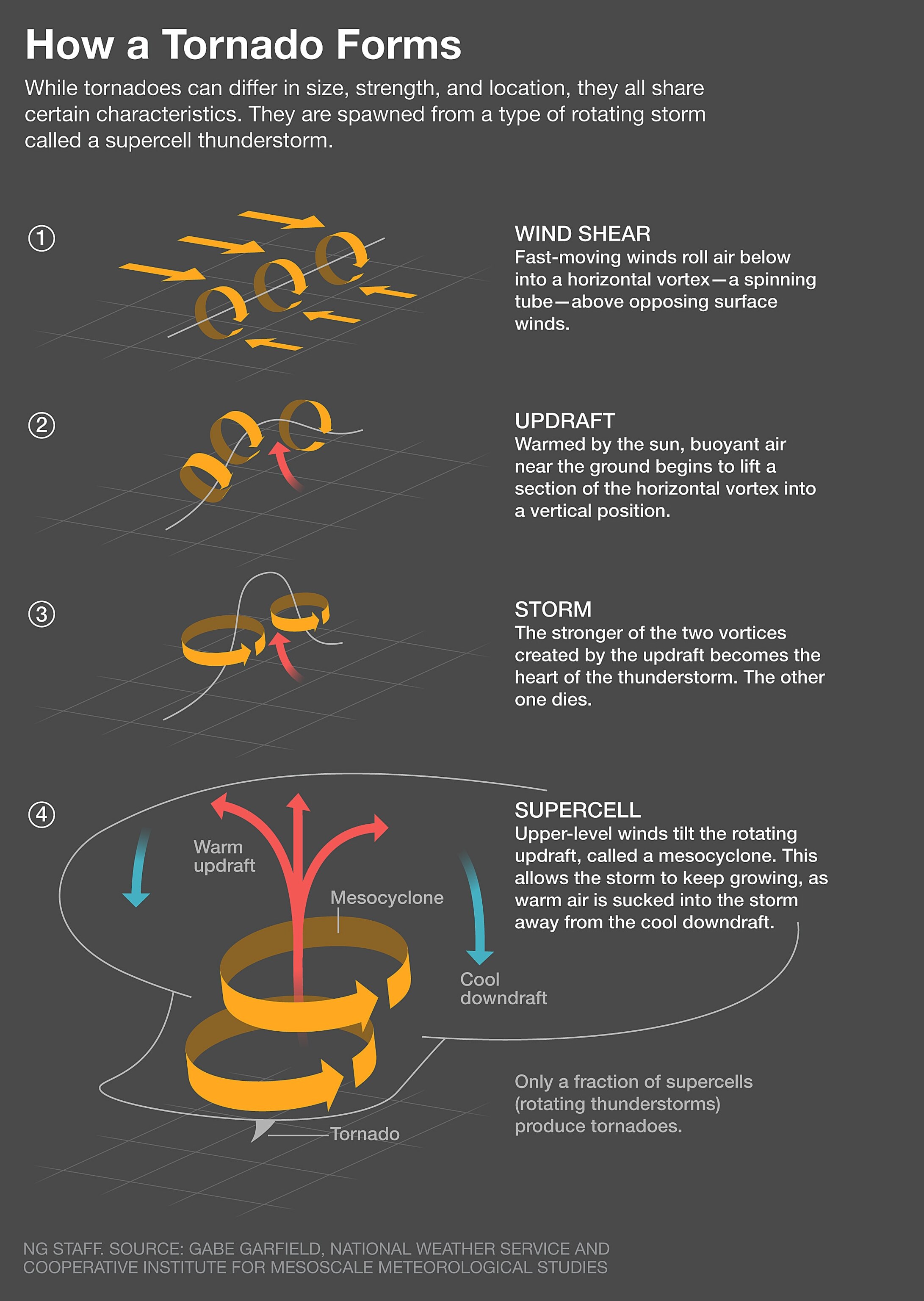
Where and When Twisters Strike
Tornadoes have been observed on every continent except Antarctica. They have been most thoroughly documented in North America, where an estimated 1,200 strike the United States each year, but they frequently appear in many other countries.
The most notoriously affected region in the United States, called "Tornado Alley," includes the Great Plains states of Kansas, Nebraska, and the Dakotas, as well as parts of Texas. Large-scale weather patterns tend to converge on that area, making tornadoes more likely.
Still, the state that receives the highest number of tornadoes per square mile is Florida, according to the American Meteorological Society. Indiana, Illinois, Iowa, and Louisiana also have many tornadoes per square mile.
In many countries, including the United States, Canada, and continental Europe, the strength of tornadoes is often measured by the Fujita scale or the updated Enhanced Fujita Scale. An F0 or EF0 tornado damages trees but substantial structures are left unharmed; a tornado in the strongest category—F5 or EF5 —blows away buildings. Scientists are still measuring this week’s tornadoes in Illinois but early estimates suggest they may have been EF3.
Since measuring wind speeds inside a twister is extremely difficult, scientists typically rely on damage to estimate velocities.
Difficulties of Forecasting
Tornadoes are much harder to forecast than are hurricanes, which are larger storms that last a lot longer. According to NOAA, the average amount of time between a tornado warning and the arrival of a storm is about 13 minutes. (A tornado warning means a twister has been sighted, while a tornado watch means one is possible.)
The National Severe Weather Laboratory's Warn-on-Forecast research project is aiming to improve forecasting.
The project uses powerful software to crunch data on temperatures, moisture, and other atmospheric variables. Sometimes the system "makes really good forecasts, and other times it doesn't," says Brooks.
As computers get faster and data improves, accuracy may improve. In the meantime, better understanding of the atmosphere will help with planning for wind farms or the placement of solar panels.
For now, even predicting the path of a known tornado across the landscape is extremely difficult. Tornadoes tend to follow the general movement of the thunderstorm they are associated with, but their routes can be erratic.
"It's kind of like walking a dog," Brooks says. "You get down the block, but in the middle the dog goes back and forth."

